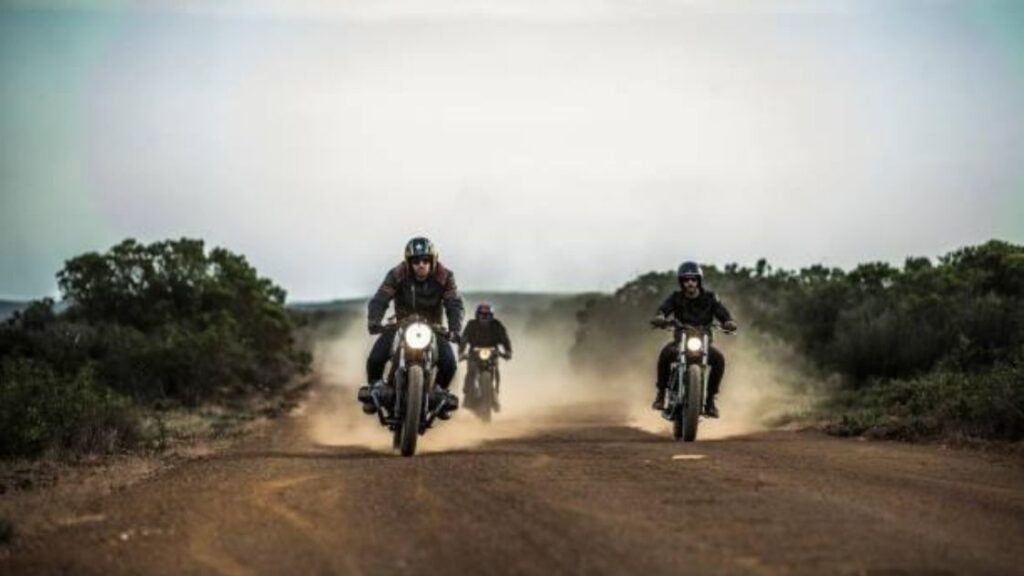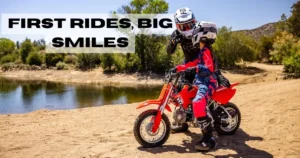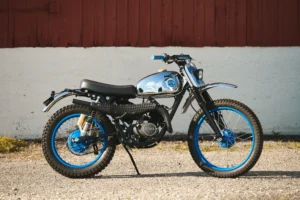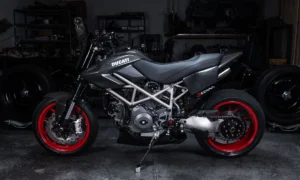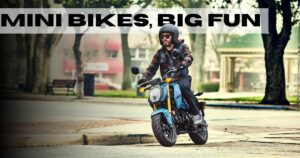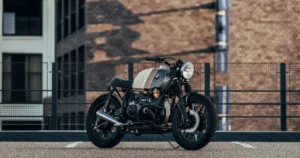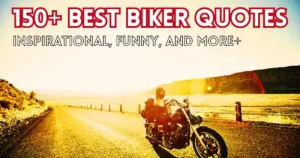Table of Contents
ToggleLet’s dive right into it. Imagine it’s the 1950s in Britain. The streets are filled with the roar of motorcycles, leather-clad young riders speeding from one café to the next. This was the birth of café racer culture. But what exactly is it?
Café racer culture isn’t just about a type of motorcycle; it’s a way of life. It started as a rebellious movement where young motorcyclists wanted speed and style. These bikes were stripped down, modified, and customized for speed. The goal was simple: to go as fast as possible on the city streets.
The name “café racer” comes from the idea of racing from one café to another, often places like the famous Ace Café in London. Riders, known as “Rockers,” loved the thrill of the ride, the sound of the engine, and the freedom of the open road. Today, the café racer scene has grown beyond Britain and become a global phenomenon.
Historical Background
The café racer culture began in the 1950s in post-war Britain. During this time, young people were looking for excitement and freedom. Many of them turned to motorcycles because they were affordable and offered a thrill that cars couldn’t provide.
These young riders, called “Rockers,” gathered at cafés like the Ace Café in London. They listened to rock ‘n’ roll music, shared stories, and raced their bikes. The challenge was to reach 100 mph, known as “the ton,” before the song ended. It was about speed, rebellion, and rejecting a boring, predictable life.
Café racers quickly spread across Europe. Riders in Italy, France, and Germany started building their own versions. They loved the minimalist design and focus on speed. The café racer style became a symbol of a new, fast-paced youth culture that still influences motorcycle design today.
Characteristics of Café Racer Motorcycles
Café racers have a distinct look. They are designed for speed, not comfort. The bikes are stripped down, removing any extra parts to make them lighter and faster.
Key features include low, narrow handlebars known as “clip-ons.” These handlebars put the rider in a crouched position, reducing wind resistance. The seat is usually flat, with a small hump at the back called a “cowl.” This sporty seat is designed for a solo rider, emphasizing the focus on speed.
Rear-set footpegs give the rider an aggressive stance, ideal for racing. The design is simple, often featuring a small, round headlight and an exposed engine. Popular models include the Triumph Bonneville, Norton Commando, Honda CB series, BMW R series, and BMW K series, all known for their reliable engines and easy customization.
The goal of a café racer is speed and style, with every part serving a clear purpose. The stripped-down look and focus on performance make it an icon in the motorcycle world.
Lifestyle and Fashion
Café racer culture is more than just the bike. It’s about the style and the look of the rider. Most riders wear leather jackets, not just for fashion but for protection. The jackets are tough and add to the rebellious image. Many riders add patches or logos, showing their club or favorite brand.
Jeans and boots are common. They are practical, durable, and fit the rugged look. Boots protect the feet and give a good grip on the bike. Riders often wear a classic white T-shirt under their jacket, inspired by the Rockers of the 1950s.
Retro helmets with a round shape are popular. They match the vintage look and offer basic protection. Some riders also use goggles or sunglasses. The overall style is practical but reflects the spirit of freedom and speed.
Global Influence and Evolution
The café racer movement started in Britain but quickly spread worldwide. In the 1960s, riders in Europe, especially in Italy and France, began customizing their own café racers. They used bikes from Ducati and Moto Guzzi, adapting the style to fit their own preferences.
In the United States, the café racer scene grew in the 1970s. American riders loved the classic look and began customizing Honda, Yamaha, and Harley-Davidson models. Today, café racer culture is global, with communities in Japan, Australia, and beyond. Each country adds its unique twist, but the focus on speed and minimalism remains.
Modern motorcycle brands like Triumph and Royal Enfield have released new café racer models, blending vintage design with modern features. The style is timeless and continues to attract new fans.
Community and Events
Café racer culture has a strong, welcoming community. Riders gather to share their love for these bikes, show off their custom builds, and ride together. The Ace Café in London remains a key spot for events. It hosts rallies and gatherings that attract fans from all over the world.
Motorcycle clubs are another big part of the scene. Some clubs are local, while others have members from different countries. These clubs organize regular rides and meetings, offering a great way for riders to connect and share tips.
Online, there are many forums and social media groups dedicated to café racers. Riders post photos, share customization tips, and discuss their favorite bikes. It’s a large, active community united by a love for speed, style, and the open road.
Building and Customizing a Café Racer
Building a café racer is about creating a bike that reflects your personal style. It starts with choosing the right model, like a Triumph Bonneville or a Honda CB. These bikes have strong frames and engines, making them perfect for customization.
The frame is stripped down to remove any extra weight. Riders often add low handlebars and a flat seat for a racing stance. They might upgrade the engine and replace the exhaust for better performance and a deeper sound.
The paint and design are kept simple, often using bold colors like black or silver. Riders might add small details like stripes or logos for a classic look. Every café racer is unique, showing the personality of its owner.
Café Racer Culture in Media
Café racers have appeared in many movies, TV shows, and books. Films like “The Leather Boys” show the early café racer scene, while modern films like “The Girl with the Dragon Tattoo” use café racers to portray a cool, rebellious image.
In TV shows like “Sons of Anarchy”, café racers stand out for their unique, stripped-down design. Books like “Café Racers: Speed, Style, and Ton-Up Culture” explore the history and impact of these bikes, providing a deeper look into the movement.
The connection to rock ‘n’ roll music, with bands like The Beatles, has also been a big part of café racer culture. It adds to the vintage, rebellious vibe that fans love.
Safety and Riding Experience
Riding a café racer is exciting but requires caution. The bikes are fast, and their racing stance can be hard on your body. Wearing the right gear, like a leather jacket, boots, and helmet, is essential for protection.
Always check your bike’s brakes, tires, and lights before riding. The minimalist design means every part needs to work well, especially at high speeds. Riding defensively and staying alert are key to enjoying a safe ride.
The experience of riding a café racer is about speed and freedom. It’s about feeling the wind and the power of the engine. But safety should always come first.
Conclusion
Café racer culture has lasted for decades because it’s more than just a trend. It’s a lifestyle that values freedom, speed, and individuality. From its origins in Britain to its global popularity today, the café racer scene has kept its unique appeal.
The café racer community is strong, whether at events, online, or on the road. Riders today still love the mix of vintage style and modern performance. Building or riding a café racer is about creating a bike that is personal and meaningful.
In the end, café racers are about enjoying the ride. They are about the thrill of speed and the love of the open road. The culture remains timeless, inspiring new riders and keeping the tradition alive.
FAQs
What is the origin of the term “café racer”?
The term “café racer” originated in 1960s Britain, where young motorcyclists modified their bikes for speed and raced between cafés like the Ace Café in London.
What are the key features of a café racer motorcycle?
Café racers are lightweight bikes with low handlebars, a single seat, and a minimalist design focused on speed and agility.
How did café racer culture spread globally?
Starting in Britain, the café racer movement expanded to Europe and the U.S., influencing motorcycle design and culture worldwide.
What is the connection between café racers and rock ‘n’ roll music?
Café racer culture is linked to the 1950s rock ‘n’ roll scene, with riders, known as “Rockers,” embracing the music’s rebellious spirit.
How can I start building my own café racer?
Begin by selecting a suitable base motorcycle, then modify it by stripping unnecessary parts, adding low handlebars, and customizing it to reflect your personal style.

